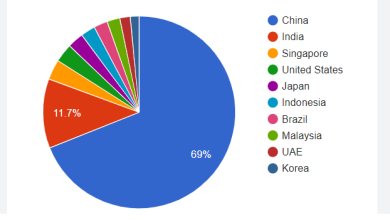From Data to Masterpiece: Understanding Generative AI in Art

Introduction
Generative AI in art has revolutionised the way we perceive and create artistic works. From generating compelling paintings to composing mesmerising music, generative AI algorithms have demonstrated remarkable creativity and potential. A Generative AI Course is a preferred learning option among advertising professionals, designers, music composers, and creative artists.
How AI Impacts the Art World
Let us delve into how AI technology works and its impact on the art world.
What is Generative AI?
Generative Artificial Intelligence refers to algorithms and models that can autonomously produce new content that resembles or is inspired by existing data. In the context of art, generative AI can analyse vast datasets of artwork and then produce new pieces that mimic the styles, themes, or even create entirely novel artistic expressions.
How Does Generative AI Work in Art?
- Training on Data: Generative AI models, such as Generative Adversarial Networks (GANs) or Variational Autoencoders (VAEs), are trained on large datasets of images, paintings, music, or other artistic forms.
- Learning Patterns: During training, the AI learns the underlying patterns, styles, and features of the input data. For example, it might learn brushstroke techniques, colour palettes, or musical motifs.
- Generating New Content: Once trained, the AI can generate new content by extrapolating from the learned patterns. This could involve combining elements from multiple artworks, creating entirely new compositions, or even blending different styles.
- Feedback Loop: Some advanced generative AI systems incorporate feedback mechanisms, allowing users or other AI systems to provide feedback on generated content. This feedback loop can help refine and improve the generative process.
Applications of Generative AI in Art
- Painting and Visual Art: Generative AI can produce paintings, drawings, and digital art in various styles, ranging from classical to abstract.
- Text and Literature: AI can generate poetry, stories, and even entire novels by analysing existing literary works and learning their stylistic nuances. Writers, especially ghost writers, for whom originality is not as much a concern as with real writers, enrol for a Generative AI Course as such learning can equip them to generate output faster and with variety.
- Music Composition: AI algorithms can compose music in different genres, mimic the style of specific composers, or even create entirely new musical forms.
- Design and Fashion: Generative AI can assist in designing clothes, accessories, and even entire fashion lines by analysing trends and creating new designs. Fashon designing is a business segment that typically represents commercialisation of art. Many fashion designers in cities like Bangalore and Mumbai have realised he potential of AI in assisting them with creativity as evident from the number of enrolments an Artificial Intelligence Course in Bangalore or Mumbai draws from fashion designers.
Impact on the Art World
- Exploration of New Styles: Generative AI enables artists to explore new styles and techniques that they might not have considered otherwise.
- Democratisation of Art: AI tools make art creation more accessible to people without formal training, democratising the creative process. Because of the popularity of some forms of art such as music or dance, casual hobbyists and dilettantes see an opportunity in commercialising the talent they have by supplementing it with technical skills. A Generative AI Course often suffices to launch them into the business of art.
- Inspiration and Collaboration: Artists can use AI-generated content as inspiration or collaborate with AI systems to create hybrid artworks.
- Ethical and Philosophical Questions: The rise of AI-generated art raises questions about authorship, authenticity, and the role of human creativity in the digital age. For instance, an artwork created by an artist who is equipped with the technical knowledge gained by attending an Artificial Intelligence Course in Bangalore might not find as much approval from an art collector as does one that was created by an artist without the aid of any technology. Talent and skill are not judged with the same scale when it comes to assessing the value of art.
Conclusion
Generative AI represents a powerful tool for artistic creation, pushing the boundaries of human imagination and opening up new possibilities in the world of art. While it sparks debates about the nature of creativity and the future of artistic expression, there is no denying its transformative impact on the way we perceive and create art. As technology continues to advance, so too will the potential for generative AI to inspire, challenge, and redefine the art world as we know it.
For More details visit us:
Name: ExcelR – Data Science, Generative AI, Artificial Intelligence Course in Bangalore
Address: Unit No. T-2 4th Floor, Raja Ikon Sy, No.89/1 Munnekolala, Village, Marathahalli – Sarjapur Outer Ring Rd, above Yes Bank, Marathahalli, Bengaluru, Karnataka 560037
Phone: 087929 28623
Email: [email protected]




